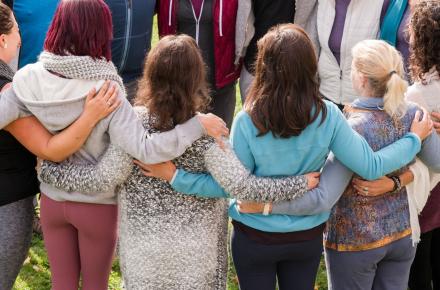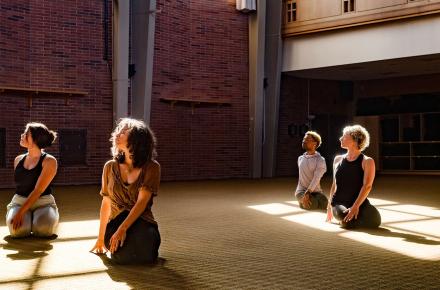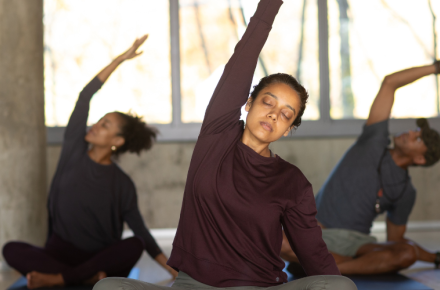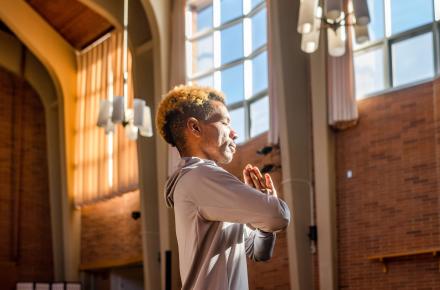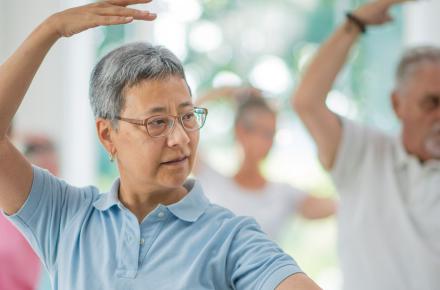A LifeForce Yoga Breathing Practice to Ease Anxiety and Depression

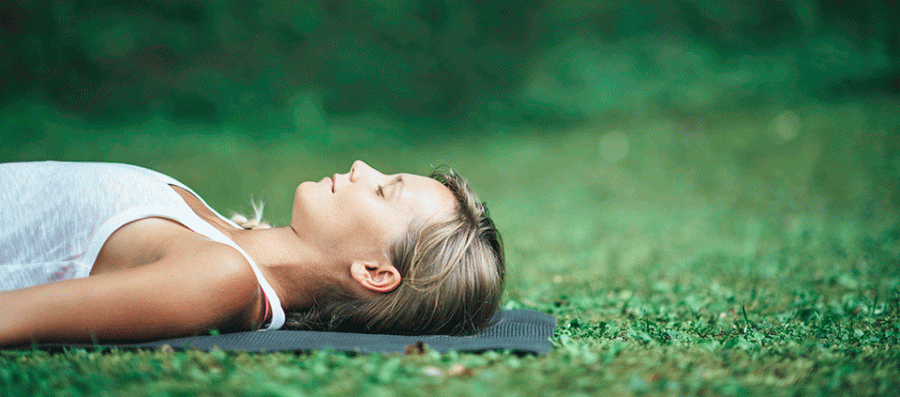
We were born with an anxiety gene. Anxiety is evolution’s gift to and its curse on our species. Anxiety protected our long-ago ancestors from wild beasts and marauding tribes. Our species has been ever on the lookout, hyper-vigilant, wary of attack. Those who were careless or a little too laid back in the face of a grizzly or an invader didn’t survive.
Anxiety is nothing new. What’s new is that we are more alone with it. Gone is the village square where our grandparents gathered. Even the dining room table where our families gathered to tell the stories of their days at the office, or on the farm or in school, is fading from view. When I was a kid, my family would gather around the television, as though it were a hearth, to watch the Beatles on The Ed Sullivan Show, or Walter Cronkite deliver the news of the day, or reruns of I Love Lucy. Now we each have our own device on which to watch the programs of our choice. Our families are spread out, dislocated, divorced. The village no longer raises the child. We are hooked in, wired, with hundreds of Facebook friends, but with no one to call when we’re feeling lousy.
I know of no better way to sense our interconnectedness than to begin a breathing practice. Aside from the well-documented health benefits, we can stop a ruminative chain of thoughts or a negative mood state in its tracks with one of many simple yogic breathing exercises, or pranayama.
Trauma, loss, and the everyday hassles of daily life can create constriction in the physical and emotional body. As we constrict, we begin to close off from others. Some of us carry this sense of separation throughout our lives in the form of depression. Yogic breathing can begin to break through that wall of separation, perhaps just a chink at first, through which we begin to feel less separate and alone. A simple breath can give us a felt sense of our connection to the energy of the cosmos. Einstein once said that we are operating under the optical delusion of our separateness and that our separateness is lethal. When we breathe mindfully, that delusion dissolves and we begin to see clearly again that we are intimately and eternally connected to the energy of the universe and to each other. What is authentic within us is given voice.
Yoga helps us feel more expansive and spacious within, and more connected to others without. It’s not surprising that we have this subjective experience of reconnecting with ourselves and with others, because that’s exactly what’s happening biochemically. Research has shown that we are lowering the stress hormone cortisol when we practice yoga, and we are raising our levels of GABA, a neurotransmitter that protects us from anxiety and depression. We are also raising our levels of oxytocin, the “bonding” hormone that allows us to feel more connected to others.
When I wrote the first article on yoga and mental health in 1999, called, “Yoga, the Natural Prozac,” for Yoga Journal, there were only a handful of studies indicating how effective yoga could be in helping those suffering from anxiety and depression. Today there are hundreds of studies suggesting the improvement in mood and quality of life for those who practice yoga regularly. Yoga is being prescribed by medical professionals, and appropriate practices are being integrated into medical and mental health settings—including pranayama, universal tones (mantras), hand gestures (mudras), visual imagery (bhavana), simple meditations that give the mind a bone to chew on, and gentle chair postures. The military is exploring yoga as a treatment for post-traumatic stress disorder, and many Veterans Administration hospitals and trauma treatment clinics provide yoga as a regular part of treatment.
Not all practices are appropriate for clinical settings, and even some that may be appropriate in treatment might not be the best choice for everyone. It’s important to understand the practices that are safe for anxiety, for depression, for folks recovering from a history of trauma and for other mental-health conditions. In LifeForce Yoga, we teach practices that you may not encounter in regular yoga classes. These practices have been adapted for mental-health care and many are specific to mental health conditions.
Here’s the LifeForce Yoga Stair-Step Breath, based on a yoga breathing exercise called Analoma and Viloma Krama.
LifeForce Yoga Stair-Step Breath
When meeting a depressed mood, practice lying down and then notice if you’re ready to stand up. When meeting an anxious mood, practice in a seated position, although you may wish to lie down when you finish.
This practice is excellent if you have trouble taking a deep breath, because it meets your initial shortness of breath and slowly begins to lengthen it. If you’re feeling a high level of anxiety, it’s best to only practice part one.
- Take little steps through the nostrils, as though you are climbing a mountain. Pause at the top of your mountain and see something that lights you up inside. Slide down the mountain through the nostrils. Repeat.
- Next take an elevator ride up to the top of your mountain. Pause and see something that makes your heart smile. Take little steps down the mountain. Repeat.
- Next, take little steps up the mountain. Pause and see something pleasing. Take little steps down the mountain. Repeat.
- Take little steps up, as though you are climbing a mountain. Pause at the top of your mountain and see something that lights you up inside. Slide down the mountain.
Find out about upcoming programs with Amy Weintraub.
© Kripalu Center for Yoga & Health. All rights reserved. To request permission to reprint, please e-mail editor@kripalu.org.




























